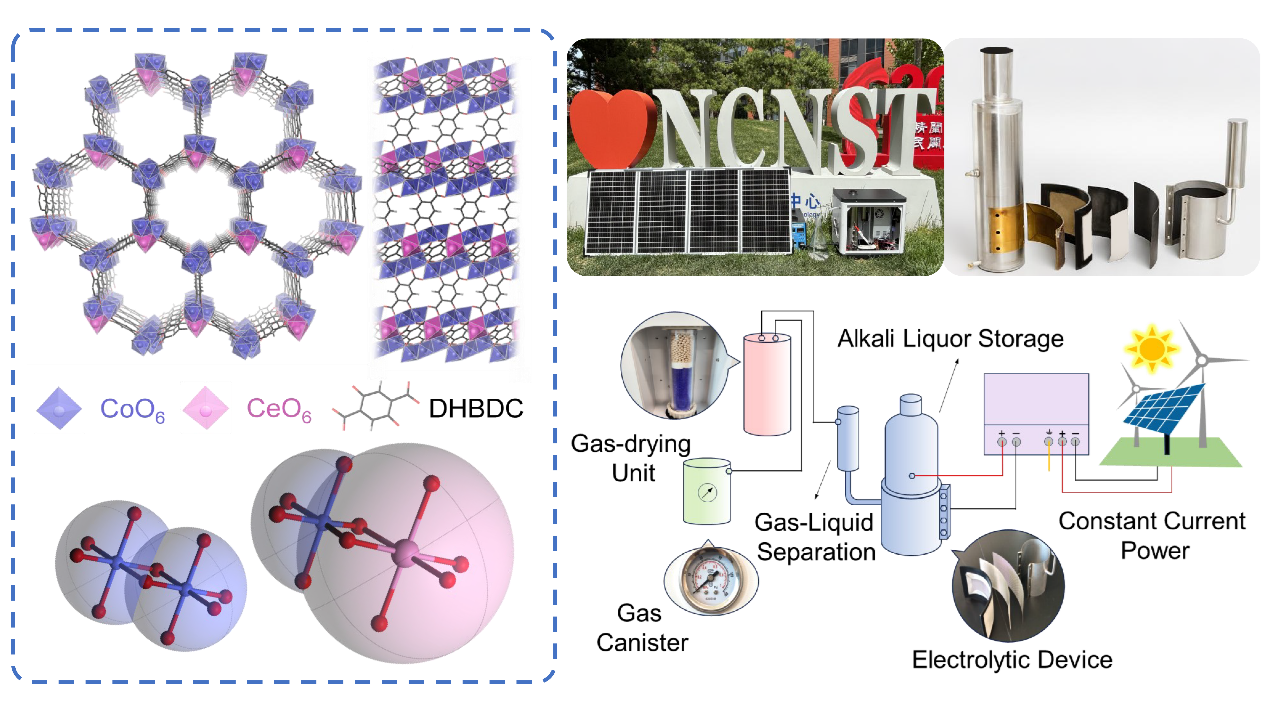Conventional catalysts face a critical trade-off: they either exhibit high activity at lab scale but fail to meet mass-production demands, or struggle to integrate into industrial-scale electrolyzers while maintaining performance.
As reported in a recent cover article in Nature Chemical Engineering, a research team led by Prof. ZHAO Shenlong from the National Center for Nanoscience and Technology (NCNST) addressed this challenge. They developed scalable metal–organic framework (MOF) electrodes for alkaline water electrolysis, combining facile synthesis with industrial compatibility. Using ultrasonication, the team produced kilogram-scale quantities of MOF powders, and via room-temperature electrodeposition, they fabricated large-area (400 cm2) electrodes. When integrated into alkaline electrolysis systems, these electrodes demonstrated low energy consumption of 4.11 kWh Nm−3 H2 and stable operation for over 5,000 hours, marking a pivotal transition from lab-scale innovation to industrial-ready technology.
The excellent performance of the MOF electrodes arises from cerium (Ce) doping, which tunes the electronic structure of cobalt (Co) active sites, substantially boosting OER kinetics. Additionally, the bimetallic CoCe-MOF's lattice distortion and high surface area enhance mass transport (water/gas diffusion) and electrolyte accessibility, further improving catalytic efficiency in practical devices. Enjoying these structural advantages together with scalable manufacturing, the electrodes enable efficient hydrogen production at a cost of just US$2.71 per kilogram, underscoring strong potential for sustainable large-scale deployment.
This work bridges the gap between fundamental research and industrial implementation, offering a commercial-viable pathway for MOF-based electrolysis technologies to reshape the energy landscape. Further effort should focus on optimizing the synthesis process to ensure consistent performance during large-scale production and expand compatibility with different industrial electrolysis systems.

Schematic Diagram: Overview of MOF structure and the alkaline water electrolysis system with key components (Image by ZHAO Shenlong et al)
Contact: ZHAO Shenlong
National Center for Nanoscience and Technology (NCNST)
E-mail: zhaosl@nanoctr.cn




